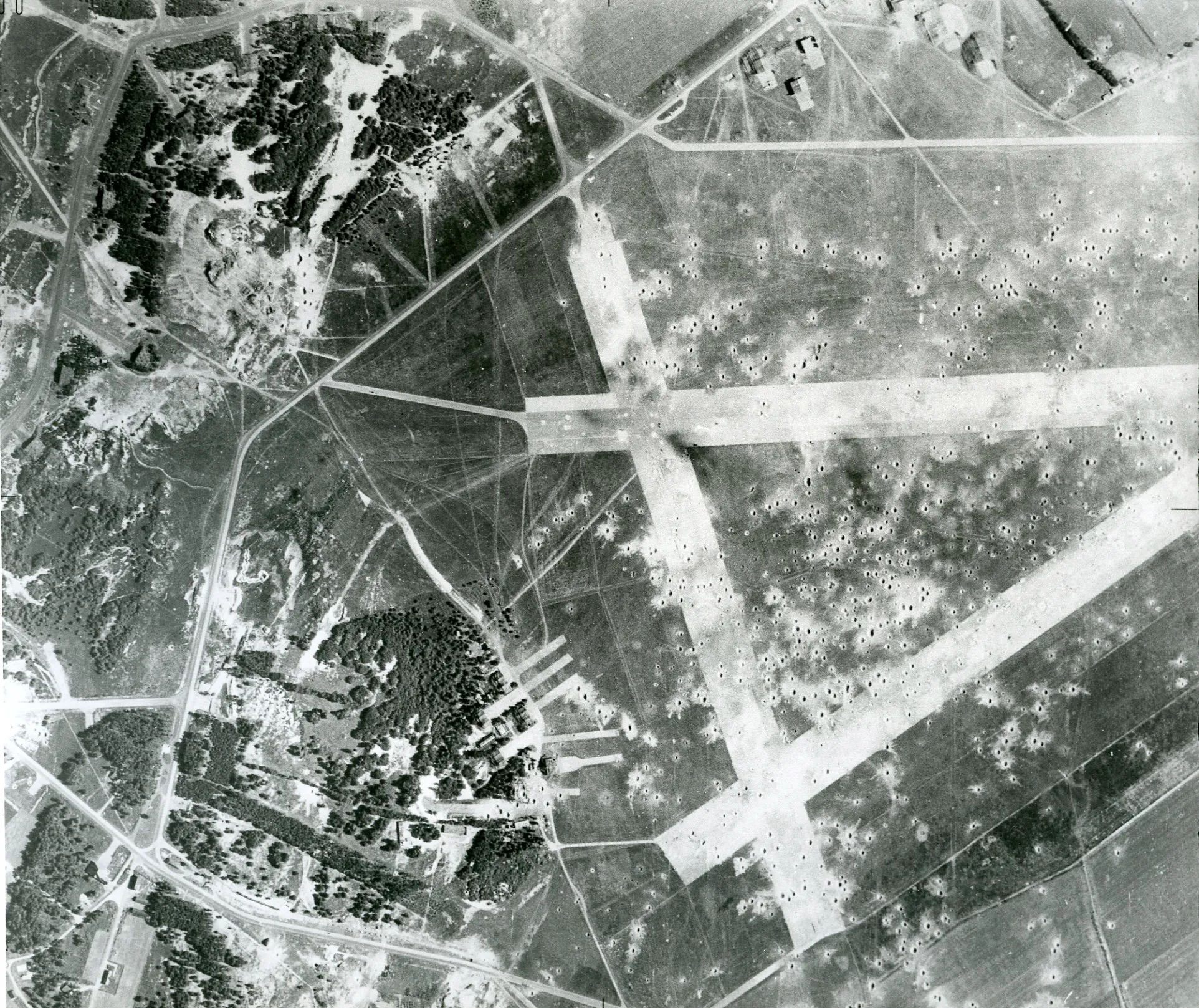Multiple aircraft bombs found at Dutch Deelen military aerodrome

Deelen, The Netherlands - 1.000 pounds, 500 pounds and 100 pounds. These aircraft bombs were dumped in World War II and several copies are in the ground of the military aerodrome Deelen. The Explosive Ordnance Disposal Service (EOD) found them, in collaboration with a civil contracting company.
Such research more often leads to the discovery of bombs. What is new is that they appear to be coming closer to the surface and are also becoming more unstable and this increases the risk of explosions. The research was done with a view to the construction of a so-called drop zone, a place where soldiers prepare to be able to drop equipment and personnel in enemy territory.
Sensitive to shocks
As far as Commodore Robert Adang is concerned, the military training at Deelen continues as usual. "Due to safety considerations, this only happens over paved parts of the base such as taxiways and the runway." said the commander of the Helicopter Defense Command, who is also commander of the Deelen military aerodrome. “Using other parts carries too much risk.”
This is because several bombs are equipped with so-called chemical long-time delay detonators (CLV). These are very sensitive to shock and vibration. In addition, they are also shallow in the ground.
Spontaneous detonation
More than 75 years after the projectiles were dropped, they pose an increasing risk. This is caused by the aging process of the celluloid plate of a non-activated CLV. That plate holds a biased firing pin. The condition of the celluloid deteriorates so that bombs can explode spontaneously in the worst case.
Meanwhile, a number of 150 square meters of sections of the military terrain have been examined for aircraft bombs. These have also been found, but there are probably many more. Research must show where and how many bombs are still in the soil.
Consequences for farmers
The dangerous projectiles mainly affect a number of farmers. They are no longer allowed to work on their land due to the risk of explosion. It has now become apparent that this is very serious. In Germany, about 80 bombs with the CLV detonator have exploded spontaneously over the years, in the Netherlands 4, as far as is known. Also this week, a similar projectile was found in the soil of the military terrain and destroyed by the Explosive Ordnance Disposal.
According to EOD commander Jos Dirkx, activities that cause ground vibrations in unpaved areas create irresponsible risks. “That is because of the long-time delay detonators found, the shallow depth at which the bombs are found and the real possibility that there are more duds in the bottom. To remove this risk, it is necessary to have the intended drop zone and leased land examined for the presence of duds and have them cleared.”
The civil contracting company will continue to investigate the soil in Deelen in the coming period. It is not yet clear when the unpaved areas will be reopened.
Also read:
- 121 anti-tank grenades found during archery competition in Doorwerth
- Man finds WW2 plane bomb with metal detector and leaves the scene
- Photo serie: World War II airplane bomb found and defused
♦♦♦
Meest Gelezen

Column: Vijf procent aan kaas in plaats van Defensie!

Twee mooie vaarten met safarischip De Blauwe Bever vanaf Oosterbeek

Kamer neemt woningwet aan die ook voorrang statushouders verbiedt

Ook in Oosterbeek oefenen met het patiëntenportaal van je huisarts of ziekenhuis

